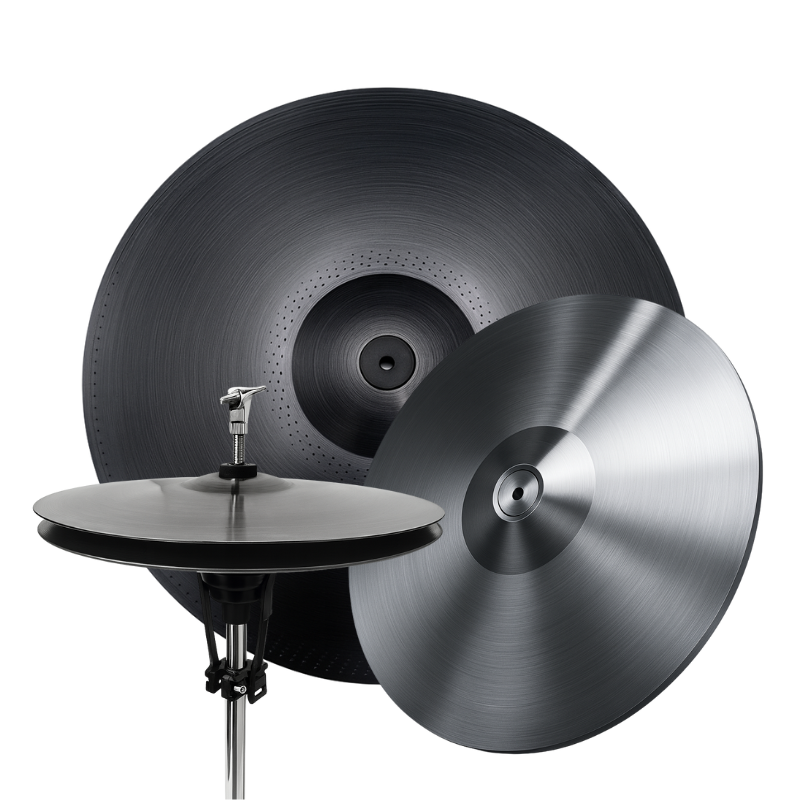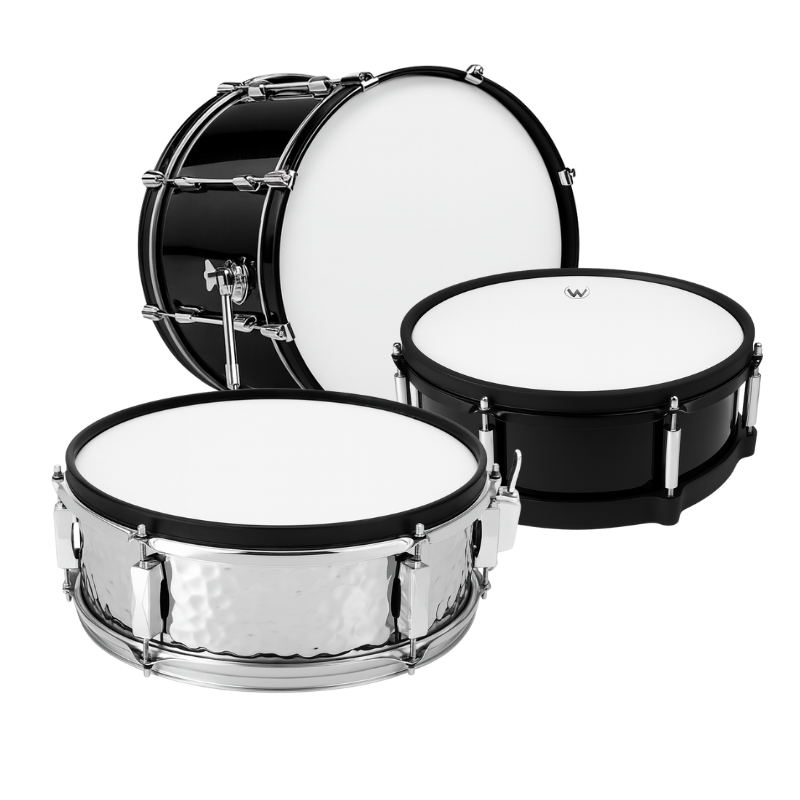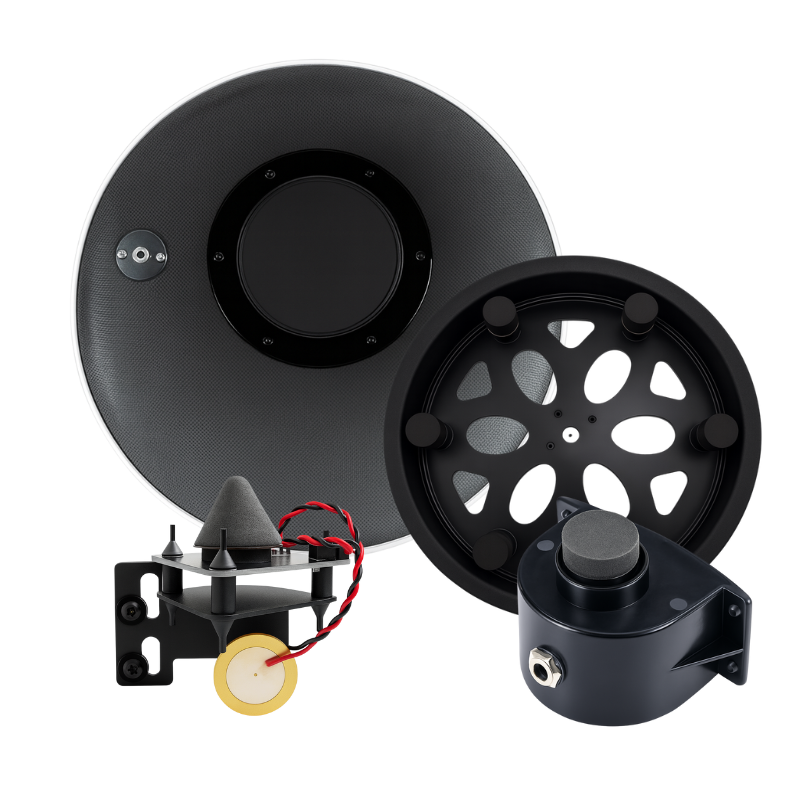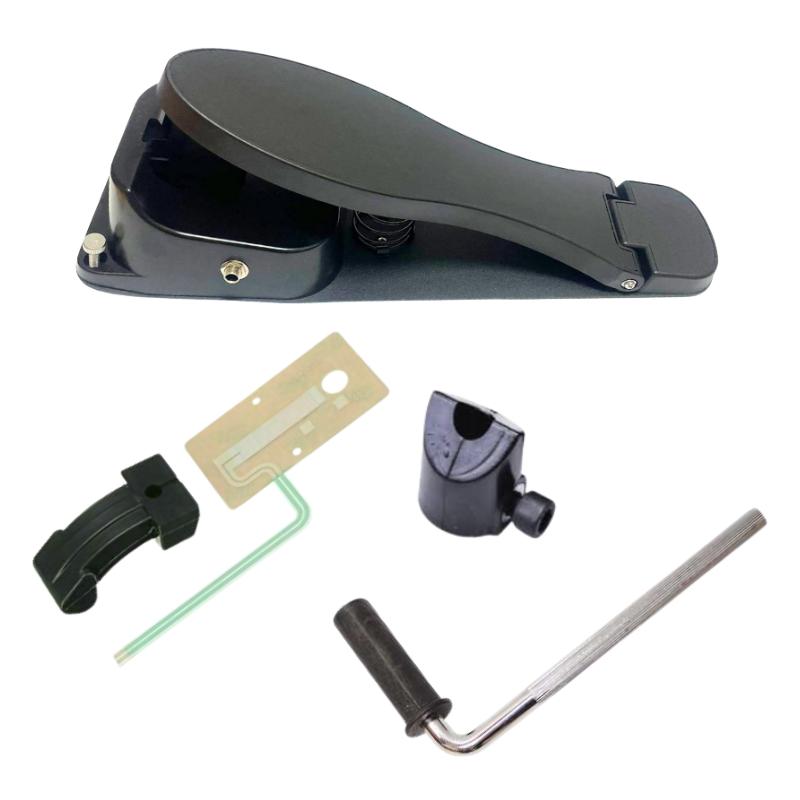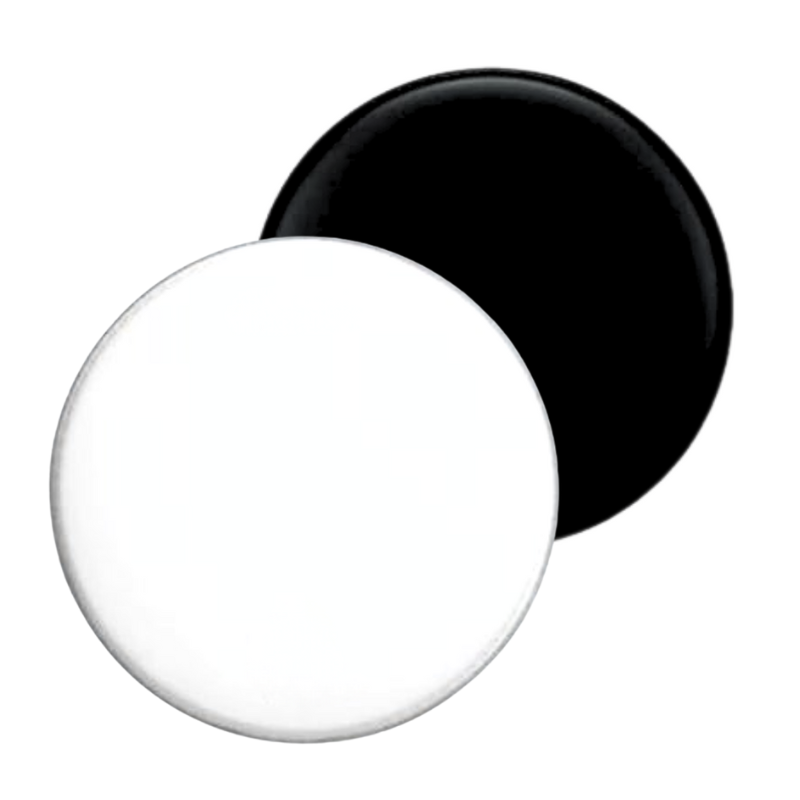
TD27 — The Definitive Guide
Share
TD‑27 Pad Settings & Trigger Calibration — Full Guide
This chapter explains all available pad types, what each does, and how to configure the following TD‑27 parameters:
Pad Type Selection
Sensitivity
Threshold
Velocity Curve
Mask Time
Compensating Retigger / Retrigger Cancel
Crosstalk Cancel
Head‑Rim / Rim Gain
Foot Splash Sensitivity
Noise Cancel
1. Pad Type Selection
When assigning a pad input in SYSTEM » TRIGGER » PAD TYPE, choose from models such as:
PDX‑100 / PD‑128 (dual‑zone mesh pads with positional sensing)
PD‑125 / PD‑105 / PD‑85 (single- or dual-zone mesh/rubber pads)
KD‑10 / KD‑120 / KD‑180 (kick pads)
KT‑10 / KT‑9 (kick trigger pedals)
CY‑18DR / CY‑15R / CY‑14C / CY‑12C / CY‑8 / CY‑5 (cymbal pads with dual or triple zones)
VH‑14D / VH‑11 / VH‑10 (hi-hats with controller motion sensors)
RT‑30HR / RT‑30H / RT‑30K (acoustic drum triggers)
BT‑1 (one‑zone bar trigger)
Choosing the correct type loads default settings optimized for zone layouts, sensitivity curves, and dynamic response. If using third-party pads, select the closest Roland model and fine-tune manually.
2. Sensitivity
Definition: Determines how easily a pad triggers. Higher values mean light hits are registered; lower values require greater force.
Recommendation:
Increase for soft dynamic playing or quiet technique
That is, setting around 9–12 for mesh pads; lower if accidental ghost triggers occur
Strike multiple dynamics while adjusting to find the sweet spot
3. Threshold
Definition: The minimum hit intensity required to trigger a sound; anything below is ignored.
Recommendation:
Raise threshold if you hear unintended triggers from vibration or movement
Lower it if your gentle strokes or ghost notes fail
Ideally, set it just above your lightest intentional hits
4. Velocity Curve
Definition: Adjusts the mapping of strike force to volume and tone. Options include:
LINEAR – evenly scaled response
EXP (1 / 2) – soft hits are accentuated
LOG (1 / 2) – loud hits are more emphasized
LOUD – consistently loud response
SPLINE – subtle S-shaped dynamic mapping
Recommendation:
Use LINEAR for most natural feel
EXP if you want more expression with light touches
LOUD or LOG for styles needing volume consistency
5. Mask Time
Definition: Time window (in milliseconds) during which a hit won't retrigger, preventing false repeated hits.
Recommendation:
Use to eliminate bounce-triggering on fast rolls or hybrid sticks
Start around 10–15 ms, increase until false hit disappears—without cutting off fast strokes
If rolls lose notes, lower it slightly
6. Retrigger Cancel
Definition: Filters out extra triggers caused by pad rebound or unstable vibrations after a single hit.
Recommendation:
Adjust in tandem with Mask Time
Start around 8–10, increase until unwanted repeats stop—but not so high that legitimate repeated hits are ignored
7. Crosstalk Cancel
Definition: Prevents a pad strike from triggering adjacent pads (common in rack-mounted kits).
Recommendation:
Use when tom or cymbal strikes cause false hits on nearby pads
Raise until false triggers stop, but not so high that soft hits fail
Helps maintain isolation in tight setups
8. Head‑Rim Adjust & Rim Gain (Dual‑Zone Pads)
Definition: Controls sensitivity and volume balance between head and rim zones.
Recommendation:
Increase Rim Gain if rimshots are too quiet
Decrease if rimshots are triggered unintentionally during head strikes
Align stick angle and threshold so head and rim are clearly distinguished
9. Foot Splash Sensitivity (Hi‑Hat)
Definition: Adjusts response to swift opening movements of hi-hat pedal (foot splash sounds).
Recommendation:
Increase if splash strokes fail or lack clarity
Decrease if accidental splashes trigger on subtle movements
10. Noise Cancel
Definition: Ignores ambient noise or very light stick contact that could trigger pads unintentionally.
Recommendation:
Useful in loud practice rooms or when using close-mounted triggers
Increase until pad triggers only on intentional hits
How to Configure Step-by-Step
Go to MENU → SYSTEM → TRIGGER SETTINGS
Strike the target pad to select it
Set Pad Type
Enter PARAM menu for that pad and adjust:
Sensitivity
Threshold
Velocity Curve
Mask Time
Retrigger Cancel
Crosstalk Cancel
Rim Gain / Head‑Rim (if dual-zone)
Additional settings (e.g. positional sensing)
For hi-hat: go to Hi-Hat Settings, choose correct hat model, and perform Offset Calibration, adjust splash sensitivity, open/close resolution
Module 1: Pad Types & Their Purpose
The TD‑27 supports a broad range of Roland pads and triggers, each preset with ideal sensitivity, zones, and response parameters:
Drum Pads / Snares & Toms
PDX‑100 (10″ mesh dual‑zone)
PD‑128 (12″ Position‑sensing snare or tom)
PD‑125/PD‑105/PD‑85 etc.
Kick Pads
KD‑10, KD‑120, KD‑140, KD‑180, KD‑A22 – cloth- or mesh-head kick pads
KT‑10, KT‑9 – trigger pedals for acoustic kicks
Hi-Hats
VH‑14D (multi-sensor hi-hat with position detection)
VH‑13, VH‑11, VH‑10
CY‑5 + FD‑8 (combo style)
Cymbals
CY‑18DR (digital ride, bell/bow/edge zones)
CY‑16R‑T, CY‑15R, CY‑14R‑T, CY‑14C‑T, CY‑12C‑T, CY‑8, CY‑5
Acoustic / Hybrid Triggers
BT‑1 bar trigger
RT‑30K / RT‑30HR / RT‑30H series (acoustic drum triggers)
If your pad isn’t in the Roland list, choose “Generic PAD1/2/3” and tune its settings manually.
Module 2: Configuring Pad Types
To configure:
Press SYSTEM → TRIGGER → TRIG TYPE
Strike the pad; the TD‑27 auto-selects it
Use the dial to scroll to the precise model (e.g., PDX‑100)
The module auto-loads optimal defaults for sensitivity, threshold, zones, etc.
Correct pad selection ensures accurate dynamic response, proper head/rim/bell detection, and minimal false triggering.
Module 3: Trigger Parameters—Tuning Each Pad
Under SYSTEM → TRIGGER → PARAM (after selecting pad):
Sensitivity (1–32): How easily the pad reacts to hits—higher sensitivity captures soft strikes.
Threshold (0–31): Sets the minimum velocity to trigger a sound—useful for ignoring vibrations or ghosting.
Velocity Curve: Options include LINEAR, EXP, LOG, LOUD, SPLINE—each shapes dynamic response.
Mask Time (0–64 ms): Prevents bounce-triggering or double hits in fast rolls.
Retrigger Cancel (0–16): Further filters unintended repeats from a single strike.
Crosstalk Cancel: Suppresses pad activation caused by nearby strikes or vibration.
Rim Gain / Head‑Rim Adjust: Dual‑zone balance and cross-stick detection thresholds.
Positional Sensing (on PD‑128 and CY‑18DR): Varies tone based on hit location—only supported with digital pad connections.
Module 4: Hi‑Hat Settings & Calibration
Accessible via SYSTEM → HI‑HAT SETTINGS:
Select hi-hat type (VH‑14D, VH‑11, VH‑10, or CY‑5)
Perform Offset Calibration: With the hi-hat pad fully closed, press SET to record zero position
Adjust Extent of Opening: Defines how wide “open” range is
Foot Splash Sensitivity: Fine-tunes foot splash detection (quick opening strokes)
Noise Cancel: Filters accidental bow or edge activation when closing the hi-hat
CC MAX: Sets maximum MIDI CC value for hi-hat pedal depth (rarely changed)
These ensure smooth open/closed transitions, expressive foot control, and splash response.
Module 5: Appliance with Third‑Party or Custom Pads
If using non‑Roland pads (including your brand):
Choose the closest matching Roland pad type (e.g. PDX‑100 for your mesh pad)
Set Sensitivity slightly lower to avoid false triggers
Raise Threshold to block light hits or vibration
Adjust Mask Time / Crosstalk to eliminate accidental triggers
Fine‑tune Rim Gain / Head‑Rim if dual‑zone detection exists
Testing with varied playing dynamics is critical—soft, medium, and hard—to ensure consistent triggering and


